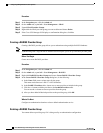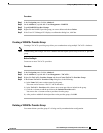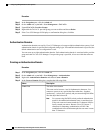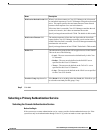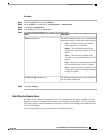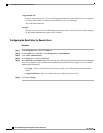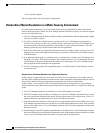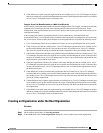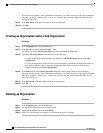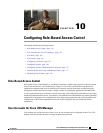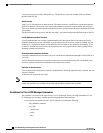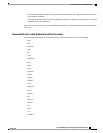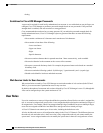
CHAPTER 9
Configuring Organizations
This chapter includes the following sections:
• Organizations in a Multi-Tenancy Environment, page 155
• Hierarchical Name Resolution in a Multi-Tenancy Environment, page 156
• Creating an Organization under the Root Organization, page 157
• Creating an Organization under a Sub-Organization, page 158
• Deleting an Organization, page 158
Organizations in a Multi-Tenancy Environment
Multi-tenancy allows you to divide up the large physical infrastructure of an Cisco UCS domain into logical
entities known as organizations. As a result, you can achieve a logicalisolation between organizations without
providing a dedicated physical infrastructure for each organization.
You can assign unique resources to each tenant through the related organization, in the multi-tenant
environment. These resources can include different policies, pools, and quality of service definitions. You
can also implement locales to assign or restrict user privileges and roles by organization, if you do not want
all users to have access to all organizations.
If you set up a multi-tenant environment, all organizations are hierarchical. The top-level organization is
always root. The policies and pools that you create in root are system-wide and are available to all organizations
in the system. However, any policies and pools created in other organizations are only available to organizations
that are above it in the same hierarchy. For example, if a system has organizations named Finance and HR
that are not in the same hierarchy, Finance cannot use any policies in the HR organization, and HR cannot
access any policies in the Finance organization. However, both Finance and HR can use policies and pools
in the root organization.
If you create organizations in a multi-tenant environment, you can also set up one or more of the following
for each organization or for a sub-organization in the same hierarchy:
• Resource pools
• Policies
• Service profiles
Cisco UCS Manager GUI Configuration Guide, Release 2.0
OL-25712-04 155




